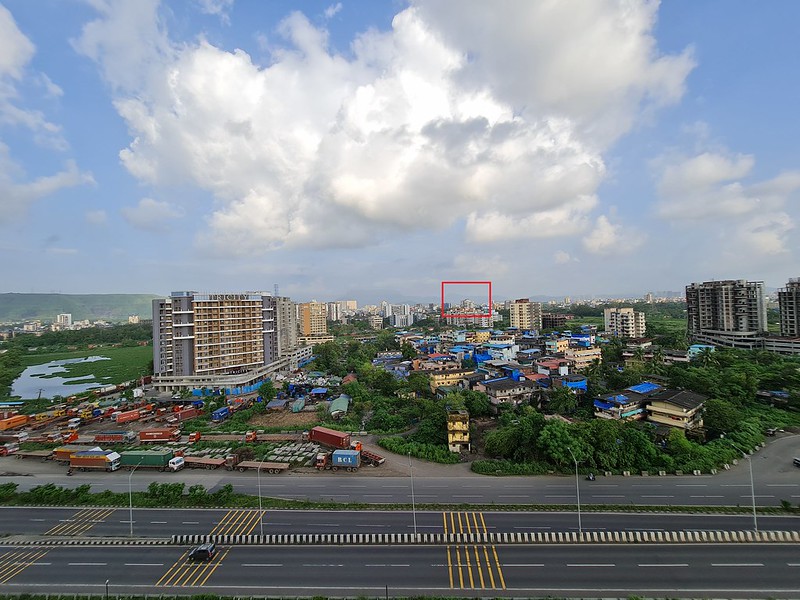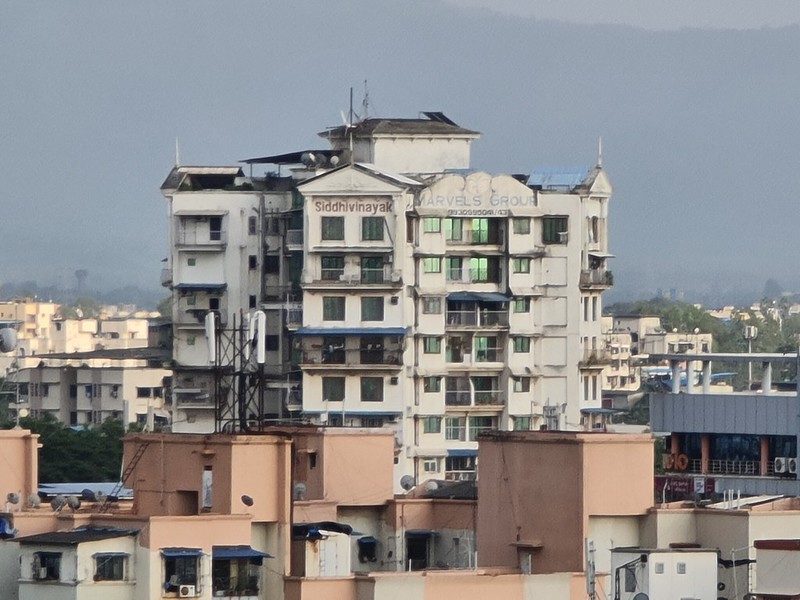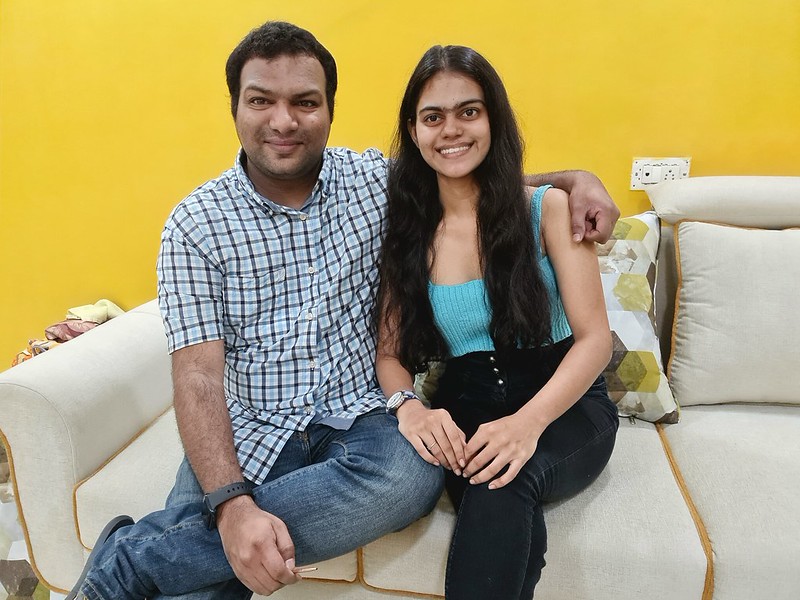The Galaxy Note 20 Ultra 5G is the first smartphone with Corning Gorilla Glass Victus.
The smartphone flaunts a massive 6.9-inch display with a refresh rate of 120Hz.
It features a triple rear camera set-up with a 108MP primary camera sensor.
2020 has been a difficult year after the COVID-19 outbreak. But that has not stopped smartphone makers from innovating. The year started with the launch of Samsung Galaxy S20 Ultra, with features including 108MP quad cameras, 5G and high refresh rate display. Xiaomi entered the ultra-premium segment with the Mi 10 while OnePlus matured from being a flagship killer to flagship grade with the OnePlus 8 series. Oppo introduced its ultra-premium Find X2 Pro, whereas Vivo innovated by adding a gimbal camera system to the X50 Pro. And that brings us to the highly anticipated smartphone of the year, the Samsung Galaxy Note 20 Ultra 5G.
With a starting price of $1,299, the Galaxy Note 20 Ultra is one of the most advanced smartphones available in the market today. Compared to last year’s Galaxy Note 10+, Samsung has improved the note-taking experience on the new smartphone. There are design refinements, upgraded cameras with 50X zooming capabilities, and a high refresh rate display. The Galaxy Note 20 Ultra 5G is also more tightly integrated with Microsoft productivity and gaming apps. In a nutshell, the smartphone has all the bells and whistles that power users could appreciate. But does it deliver on the promise? We will answer that in our review as we take a deep dive into each aspect of the phone starting this week.
CMF: Mystic Bronze is the new gold standard
The Galaxy Note line has always been the first to embrace Corning’s new Gorilla Glass solutions, and the same continues with the Note 20 Ultra 5G too. It is the first smartphone to feature the new Corning Gorilla Glass Victus both on the front and the back. The company says it is twice as scratch-resistant as the previous generation. It can survive drops of up to two meters, compared to 1.6 meters on the Gorilla Glass 6.

The Galaxy Note 10 with Aura Glow color was one of the sexiest looking phones that changed colors as light reflected from different sides on the back. But having a glossy surface had two major disadvantages – it was slippery and was a big fingerprint magnet. With the Note 20 Ultra 5G, Samsung has opted for a frosted glass finish which takes care of both the issues. It is not slippery and does not attract fingerprints easily.

Further, as we continue to talk about the CMF (Color Material Finish), Samsung deserves a shoutout for the new Mystic Bronze color. It is undoubtedly one of the most striking, elegant and sophisticated looking Galaxy phones yet. The aura of this color is such that people had been asking me about the phone every time I took it out in front of my family and friends. And there is a small gradient effect to it too. When looking from an angle with mild sunlight, at times, it appears like the Rose Gold color.
Samsung has nailed the CMF part in making Mystic Bronze the new gold standard.
Design: Minor tweaks bring some learning curve
Design-wise, you still get a big slab of metal sandwiched between the glass on the front and the back. The edges are curved on the sides, which is something that we have seen since the Galaxy Note 7. There are two major changes that the Galaxy Note 20 Ultra 5G brings on the design front, and it will need some learning curve to get used to, especially if you are a Note 9 or Note 10 user.

To begin with, the volume rocker and power buttons have been moved from the left to the right. This is good news for people who use their phones with the right hand. But for people who use their phones with the left hand, it will need a bit of time to get adjusted to the new layout. I, for once, have been using the Galaxy Note 10+ for a year now, and right after switching to the Note 20 Ultra 5G, the muscle memory of my left-hand thumb always acts whenever I want to control the volume or lock the screen.
 Ports placement Galaxy Note 20 Ultra (top), Galaxy Note 10+ (bottom)
Ports placement Galaxy Note 20 Ultra (top), Galaxy Note 10+ (bottom)
Second is a major change, which has happened after 10 generations since the first Galaxy Note was launched. I am talking about the S Pen stylus here. From the first Galaxy Note to the Galaxy Note 10+, it has always been on the right edge, but with the new Note 20 Ultra 5G, the S Pen is now on the left.

What prompted this change in position? I believe it has to do with the big camera sensor and 5G RF antennas that Samsung had to accommodate in the design. Again, there is a small learning curve, but two or three weeks after using the phone, you will likely get used to it.
The Note 20 Ultra changes the placement of S Pen, volume rocker and power button, and it takes time getting used it.
There is one more annoying part of the design which may bother some users. The Galaxy Note 20 Ultra 5G brings a giant triple camera module on the back with a big camera bump. From an engineering point, I get that this was needed to accommodate the periscope-style zoom functionality. But it makes the weight distribution uneven. Even Oppo has offered a periscope-style zoom without needing a big camera bump.
The problem with the bump is that when your phone is placed on a table facing its back, it wobbles. And unlike the previous models, Samsung has not even shipped the smartphone with a cover case, so that becomes an additional purchase for the users.
The big camera bump at the back makes the phone wobble when placed on a flat surface.
Display: One of the best-looking screens on a smartphone
There is no doubt that Samsung is a pioneer of AMOLED screens. With every new iteration of the Galaxy S and Note-series smartphones, the company has improved the touch and display experience. The Note 20 Ultra 5G flaunts a big 6.9-inch WQHD+ Dynamic AMOLED display. The screen has a resolution of 3088x1440 pixels and a refresh rate of 120Hz. It is also HDR10+ certified which makes content viewing on Netflix and Amazon Prime Video a pleasurable experience.

It is also the first Note-series smartphone to come with a variable, high-refresh-rate screen. The motion is incredibly smooth, and it is visible to your eyes when scrolling through menus or webpages. But the way this variable refresh rate works here is different from the other smartphones.
Motion smoothness is easily noticeable when playing games or scrolling through the menus.
The refresh rate varies from 60Hz to 120Hz depending on the screen resolution you choose. If you want to enjoy the high refresh rate benefits, you will have to scale down to FHD+ resolution and choose the Adaptive option under display settings. It will automatically adjust the refresh rate depending on the content and help save battery life. Though, I think an option of at least 90Hz by default for WQHD+ resolution would have been better. Since I got the Note 20 Ultra 5G, I have been using it at FHD+ resolution, and there is no visible difference in the reduced sharpness.

Otherwise, the panel is gorgeous. It is bright enough to offer great legibility under harsh sunlight. The colors are punchy, blacks are deep and whites are bright. Viewing angles are good too. No matter what content you are viewing on the screen, be it movies or games or simply scrolling through Instagram timeline, the display is a pleasure to look at.
Specifications and BoM Cost: Qualcomm’s Highest Share in a Samsung Flagship
After spending the last one year on the Galaxy Note 10+, while switching between different review devices along, the Galaxy Note 20 Ultra 5G feels very snappy and responsive. The smartphone is equipped with top-notch hardware which includes a 7nm+ Qualcomm Snapdragon 865+ SoC, with a maximum clock frequency of 3GHz for the prime core. It is a bit underclocked compared to the Asus ROG Phone 3 that features the same chipset, but a higher clock speed of 3.1GHz for the price core.
However, only the US variant of the Galaxy Note 20 Ultra comes equipped with a Qualcomm chipset. In other regions, like India, the smartphone comes with a Samsung Exynos 990 SoC, which is also made on the 7nm+ process. But the core configuration is different, with two custom prime cores clocked at 2.73GHz, two Cortex A76 cores and four Cortex A55 efficiency cores.
As mentioned above, the Galaxy Note 20 Ultra also supports 5G connectivity. In the US, the Qualcomm variant comes with Snapdragon X55 5G modem, whereas other regions get Samsung Modem 5123, both supporting mmWave and Sub-6GHz spectrums, along with SA and NSA networks.
Interestingly, according to Counterpoint’s Components Research Practice Bill of Materials (BoM) cost analysis, Qualcomm’s share in the Samsung flagship is close to 40%. The total BoM cost of the Snapdragon variant is $548.90, whereas the retail price is $1,299. The Exynos variant, on the other hand, sees Samsung share increasing to almost 70%.

Both the global and US variants come with 12GB LPDDR5 RAM and 128GB/256GB/512GB of UFS 3.0 onboard storage to ensure faster read and write speeds. A hybrid microSD card slot is also present for further storage expansion of up to 1TB. As the smartphone supports eSIM functionality, users no longer need to worry about missing out on a second SIM for adding expanded storage.
Performance: Multi-tasking Workhorse
In terms of the RAW spec sheet, Samsung has done enough to ensure the Galaxy Note 20 Ultra is a powerhouse. For a few years now, there has been an ongoing debate around the performance of Qualcomm vs Exynos chipsets. On the benchmarks and battery life side, Qualcomm may be a little ahead, but the overall performance is what matters for the user. It has been over a month, and I have been using the Exynos variant.
With 12GB of RAM and Exynos 990, the Galaxy Note 20 Ultra just zips along with any app that I throw at it. Multitasking is a breeze, where I constantly keep switching between apps like Microsoft Teams, Twitter, Feedly and WhatsApp through most of the day. The adaptive 120Hz screen refresh rate makes the experience even silky smooth. But it is not just about the hardware, the new One UI 2.5 skin on top of Android 10 and software refinements play a big role in delivering this snappy experience.
The hardware and software combination delivers top-notch performance.
The gaming experience has also been good. You do not get any special gaming mode, but Samsung has included Game Launcher where all your installed games are in one place. It shows you the list of games, the total playtime, and for how long you played it daily. There are some web instant games too that you can play, just that you need the internet to play them. Samsung has also included a game booster and Discord integration. My only problem here is that it would have been better if there was a gaming mode to block notifications and calls while gaming, and other features like 4D vibrations, which would have made the experience even better.
Lastly, the smartphone is armed with a 4,500mAh battery with support for 25W fast charging using USB Power Delivery. Sadly, unlike the competitors, there is no support for faster-charging wattage. But despite all of this, the charging is quick, where you can reach from empty to 40% in about 25 minutes and up to 75% in an hour. Full charging takes about an hour and 25 minutes. There is support for wireless charging and reverse wireless charging to charge the Galaxy Watch or Galaxy Buds devices.
The Galaxy Note 20 Ultra 5G offers an all-day battery life with moderate to heavy use.
Talking about battery life, even with a 120Hz adaptive refresh rate, it sails through the day without any hiccups. My typical usage includes social media, listening to music via Bluetooth, a smartwatch connected throughout, and gaming and binge-watching for an hour each. With all this, I consistently get close to five hours of screen time, which is not great but not bad either considering the sheer power and performance it offers.
Cameras: Brings Improvements over Galaxy S20 Ultra
With the Galaxy S20 Ultra, Samsung introduced a quad-camera set-up with a 108MP primary sensor. Unlike the earlier 12MP sensors, the new camera system did not feature dual-pixel autofocus, which resulted in auto-focusing issues, especially in close-up shots. Samsung has fixed the issue by adding a laser-assisted autofocus system, which not only offers faster focusing but also allows for capturing blur-free photos.
Talking about the set-up, the primary camera is a 108MP sensor with f/1.8 aperture and 1/1.33-inch sensor size, and supports optical image stabilization (OIS). The primary camera also supports up to 8K video recording (24fps) capabilities and ultra slow-motion at 960fps (720p) resolution. I shot some videos while on a drive, and the results were good. The OIS helps in compensating the jerks and getting a table footage, but a Gimbal like system, like on the Vivo X50 Pro, could have been an even better addition.
 Source: Samsung
Source: Samsung
The S20 Ultra featured a 48MP periscope telephoto lens (f/3.5 aperture) with up to 100x space zoom capabilities. With the Galaxy Note 20 Ultra, Samsung went with a lower resolution 12MP periscope telephoto lens (f/3.0) with up to 50x space zoom capabilities. It also supports OIS and 5X optical zoom. The third is a 12MP f/2.2 sensor with an ultra-wide lens with a field of view of 120˚.
Upfront, the smartphone features a 10MP sensor with dual pixel PDAF and support for up to 4K video recording (up to 60fps). Now that the specifications are out of the way, let us talk about the camera performance. Just like the S20 Ultra, even the Note 20 Ultra manages to impress with its photo quality. I shot a bunch of photos in different lighting conditions, and they offered crisp details along with punchy colors. One of the common problems when switching between wide and ultra-wide lenses is the inconsistency in color temperature and sky colors. But that is not the same in this case, which is impressive. Below are some camera samples.
Daylight: Great details, punchy colors
Though the primary camera is of 108MP resolution, it uses a 9x1 nona-binning technique to capture 12MP photos by default. These are about 5MB in size. If you want to click full 108MP resolution photos, you can manually choose the mode from the aspect ratio settings. Do note that these full-res photos are about 28MB in size.
Quality-wise, the camera offered great details and was able to capture the greenery, monsoon clouds and blue sky. The first photo below was captured using an ultra-wide lens, whereas the second one was captured using the main camera. The color consistency here is visible.
Samsung algorithms ensure color consistency even when switching between different lenses.
The next is a close-up photo of a leaf where even the thin strands and pores created by insects look detailed while the background is blurred.
Moving on, portrait photos are detailed too, and we can see some good separation between the background and the foreground. Edge detection of the camera is also good, where the area around the cat’s ears and each hair of mustache are clear too.
Zoom: Powerful and Capable
The 12MP telephoto lens can capture some good zoom shots. For zoom levels up to 4X, the Galaxy Note 20 Ultra uses the 108MP main sensor as there are enough details that it can crop and zoom-in. Starting at 5X (manually pinch and zoom in the camera app between 5X and 10X), it switches to the telephoto lens. Above 10X and up to 50X, the smartphone offers digital zoom capabilities.
I would want to highlight that even at 50X, some photos are quite usable. Below are two sets of photos, the first where the focus is on a slide in the park some 80-100 meters away. The photos are shot in ultra-wide, 10X, 20X and 50X zoom levels. These are all handheld shots, and I had to ensure my hands were as steady as possible. It is impressive how the OIS and other algorithms work to offer a blur-free final photo. This is where I liked the Vivo X50 Pro’s Gimbal camera implementation a bit better as you do not have to ensure being too stable. Even the OIS along with periscope zoom system on Oppo Find X2 Pro did a great job in keeping the subject stable when taking zoom shots.
The second set of photos focus on a building about 800 meters away, and the zoom levels remain the same as the above. Clearly, in both cases, photos shot at 50X zoom level are not as sharp as the one at 20X level, but they are somewhat usable and show how capable the compact camera system is. These photos were shot keeping the phone on a railing to get stable shots. For capturing better zoom shots, using a tripod is recommended.
Photos up to 10X hybrid zoom levels offer good details while retaining colors.
This photo of a bird was captured from 15 meters, and even at 10X, the camera has done a good job capturing enough details to identify an Indian Myna.
Low-light: Impressive and sharp results
Low-light photos were impressive, offering good sharpness, color retention, and barely any graininess. The big pixel size helps in capturing more light, whereas the software algorithms fine-tune the image to show the power of computational photography.
Selfies: Excellent quality, indoors and outdoors
Lastly, the front camera on the Galaxy Note 20 Ultra has been pretty impressive too, delivering excellent results. In daylight, the camera was able to capture accurate skin tone and background. Even edge detection in the portrait mode works well.
The third photo below was captured indoors in artificial light by placing the camera on a tripod. The camera has done an excellent job of capturing the colors of our skin tones, clothes, couch, and the highlight wall as well.
The front camera does a great job in capturing excellent selfies, irrespective of the lighting conditions.
S Pen: The Magic Wand is More Functional Now
Every year, Samsung brings new improvements to the S Pen stylus to make it even more functional. This year, Samsung has reduced the touch latency to just 9ms, thanks to the higher screen refresh rate. And it is not just about impressive numbers, you can notice the difference while writing on the Note 20 Ultra’s screen. The S Pen just glides over the screen smoothly as the virtual ink flows out of the stylus. The new “Air Actions” features and “Samsung Notes” enhance the experience even further.

Air Actions
With the Galaxy Note 9, Samsung introduced the Bluetooth feature in the S Pen. It allowed you to perform basic tasks like using the S Pen as a remote control for the camera, music and video apps. With the Note 10, Samsung added a gyroscope, unlocking motion gesture feature to zoom in and out in the camera app, increase and decrease media volume, and more.
So now, when you are on any screen or in any app, drawing an upside-down “V” will take you to the home screen, whereas drawing a “V” will open the smart select menu. Drawing zig-zag in the air will open the “Screen Write” menu. Similarly, drawing left and right arrow will take you “back” or open the “recent” menu. Under Settings > Advanced Features > S Pen > Air Actions, you can also change the default app that opens when you long press and hold the S Pen button.
These features may sound gimmicky, but they have been helpful at times. When clicking group selfies, I usually give the phone to the tallest guy in the group to hold so that everyone comes in the frame, and then use the S Pen to click photos. At times, when I am listening to music on a Bluetooth speaker and the phone is on charging on the desk, the S Pen comes in handy to change tracks, change volume and to play/pause music.
Air Actions is an interesting addition that comes in handy at times.
Samsung Notes: More Powerful with New and Interesting Features
Samsung has even updated the Notes app which is much more functional now. Until now, you could just jot down notes, and convert handwriting to text. With the new update, you can now annotate it with audio. For instance, you are in a meeting and jotting down notes. You can now record the audio too as you write. You can then look at your notes and play the audio to listen if you missed out on something. These are minor things that together make the Galaxy Note a powerful note-taking tool.

The other improvement comes in the form of shape detection. When taking notes, you may want to add some shapes like a circle, triangle, or square, and so on. It is a handy feature for those who like jotting down notes and figures the old school way.
Lastly, another new addition to the Samsung Notes app is the ability to convert your notes into different formats. These include PDF, Word, PowerPoint File, Image and Text files. The accuracy is not 100%, but it does the job well. I tried both ways to convert the notes into documents, but converting handwriting to text first, and then converting it into the desired document type offers better results.
The ability to convert handwritten notes to text and then into Word or PDF format makes the Galaxy Note 20 Ultra a unique productivity tool.

Samsung and Microsoft Partnership
The Galaxy Note series has always been positioned to be enterprise-grade and productivity-centric devices. The Note device excels with a powerful combination of a larger optimized display and the S-Pen to enhance the work-related tasks while on the move, right from note-taking to composing multimedia-rich emails. With the Galaxy Note 10 launch last year, Samsung announced a strategic partnership with Microsoft, the leader in productivity tools, cloud and services, to take the “work” experience on the Note devices to the next level.
Samsung complemented the pre-bundling of core Microsoft 365 apps on the Note devices with deeper integration of other Microsoft services such as OneDrive cloud and YourPhone companion app for seamless PC-to-smartphone connectivity, cloud syncing and continuity.
With the Note 20, the integration deepens across multiple fronts:
Email and calendar: Outlook emails and calendar syncs with Samsung calendar and is backed up in the cloud, making it eternally available across devices.
Notes: Samsung Notes syncs into the OneNote app. OneNote feed into the Outlook on the web will be available soon.

Gallery: Samsung Gallery now seamlessly backs up all the photos and videos into the OneDrive Cloud to easily access the collection across devices.
Xbox: A special version of the Xbox Game Pass app in Galaxy Store will allow players to make in-app purchases, like DLC items and skins, potentially bypassing Google Play store’s 30% commission. Further, Samsung is also offering a gaming bundle that includes three months of Xbox Game Pass Ultimate and PowerA’s MOGA XP5-X Plus gamepad accessory optimized for the Microsoft xCloud game-streaming service. This could potentially extend to Samsung TVs for cross-device play continuity over the cloud.
 Source: Samsung
Source: Samsung
Reminders: Samsung Reminders will be able to sync across Microsoft To Do, Outlook and Teams apps.
YourPhone App: The deeper integration of Galaxy devices with the YourPhone app on a Windows 10 PC is one of the missing pieces of cross-device continuity between a smartphone and PC.
 Source: Samsung
Source: Samsung
This integration with Windows 10 allows the user to access the Galaxy phone’s notifications and messages, and receive or make calls directly from the PC. The user can also access, edit and share pictures in the phone’s gallery directly from the YourPhone app on the Windows PC.

It also gives you full access for interaction with the applications installed on your phone right within your PC easily with the mouse and keyboard. You can pin the Android apps to the Windows Taskbar or Start menu for quick access.

Further, you can start browsing or copying text on your mobile and continue the browsing or paste the copied clipboard seamlessly on your phone-linked PC applications.
This eliminates the need to unlock, pick up and touch your phone a zillion times while you are working.

The partnership thus allows users to remotely access Microsoft 365 cloud, applications and services on the go to remain productive for work and play with Microsoft’s Xbox offerings. This fills in a big gap for Samsung to differentiate in the crowded Android space and boost the overall value proposition with a highly complementary and meaningful partnership with Microsoft.
Conclusion: The Premium Do-everything Business Phone
Overall, Samsung has done a fantastic job with the Galaxy Note 20 Ultra 5G. It is undoubtedly the ultimate Android flagship of 2020. From the Dynamic AMOLED panel with adaptive 120Hz screen refresh rate to the powerful camera setup with 50x zoom capabilities, powerful hardware and cloud gaming capabilities, the smartphone offers the best premium experience. The enhanced S Pen features, 5G and Microsoft integration sweeten the deal further for casual and business users.
However, there are a few areas where there is room for improvement. For instance, the camera bump could have been a bit thinner. The 4,500mAh battery offers good endurance but it could have been better. Talking about charging speeds, Samsung can bump the current 25W fast-wired charging speeds to 45W, 65W or even more, like its competitors such as Huawei, OPPO and realme.
Also Read: Strategic Reviews and Insights on The Latest Smartphones
Subscribe to our newsletter
















